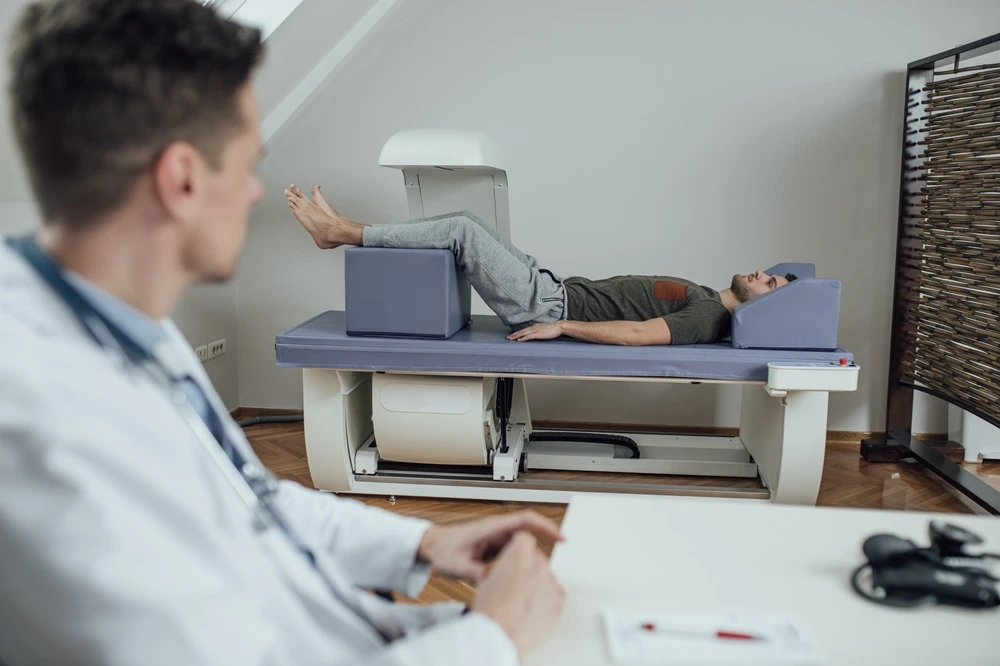Monitoring bone health plays a pivotal role in understanding overall wellness, especially for individuals at risk of certain bone-related conditions. Among the various diagnostic tools available, Dual-Energy X-ray Absorptiometry, commonly referred to as a DEXA scan, has become a widely trusted method for assessing bone density. This non-invasive imaging technique helps healthcare providers evaluate bone strength and identify conditions like osteoporosis at an early stage.
What Is a DEXA Scan?
A DEXA scan is a specialized diagnostic imaging procedure designed to measure bone mineral density. It works using two X-ray beams to capture detailed images of the bones, primarily focusing on areas prone to fractures, such as the spine, hips, and sometimes the forearm. The results provide data on bone strength and density, enabling healthcare professionals to calculate changes in bone mass over time. This scan is widely used to assess risk levels for osteoporosis, as well as other conditions that may impact skeletal health. Its accuracy and precise imaging allow medical practitioners to tailor care plans based on the findings.
Who Can Benefit From One?
DEXA scans are suitable for a wide range of individuals. There are specific groups who may particularly benefit from undergoing this type of testing. These can include:
- Postmenopausal Women: After menopause, declining estrogen levels can contribute to a decrease in bone density, placing women at higher risk for osteoporosis.
- Adults With Specific Risk Factors: Certain lifestyle or medical factors, such as chronic use of corticosteroids, smoking, low calcium intake, or a family history of osteoporosis, may elevate the risk of reduced bone density. These individuals may be advised to undergo periodic scans to keep track of bone health.
- Patients Undergoing Treatment for Bone Loss: Those receiving medication to address bone density concerns may use DEXA scans as a monitoring tool to assess treatment effectiveness.
- Older Adults: Because the aging process naturally reduces bone mass, older adults are often monitored closely for bone density changes. A scan provides key insights into whether age-related bone loss may pose a significant risk.
What Does the Process Entail?
The DEXA scan process is simple and non-invasive, typically requiring only a short period to complete. Here’s an overview of how the procedure works:
- Preparation Before the Scan: Most patients are advised to remove metal fastenings. Jewelry, belts, or other metal objects will be removed to avoid interference with imaging. While minimal preparation is required, patients may be asked to avoid calcium supplements for a day prior to the test to improve image clarity.
- The Scanning Procedure: The test itself involves lying flat on a padded table, positioning the body to facilitate optimal imaging of key areas such as the spine and hips. A small scanner moves over the body without making contact, emitting low-dose X-rays to capture the necessary data. Patients are required to remain still to prevent any blurring of images.
- Duration and Comfort: The procedure is quick, generally lasting about 10 to 20 minutes. It is pain-free, with no downtime required afterward, allowing patients to carry on with their day as usual.
Seek Professional Diagnostic Care
Protecting bone health is an integral part of maintaining overall well-being. This is especially the case with the potential risks associated with aging or certain medical conditions. DEXA scans offer a reliable and precise method of assessing bone density. This enables healthcare practitioners to monitor changes over time and develop tailored approaches for maintaining skeletal strength. It is advisable to work with healthcare providers experienced in diagnostic imaging for a comprehensive evaluation.
- Pedrovazpaulo Wealth Investment: Unlocking Financial Freedom Through Innovative Strategies
- EO Pis: A Comprehensive Guide to Environmental Objectives and Performance Indicators
- Premiumindo69: The Future of Digital Entertainment
- Macadamia Nut Milk: Health Benefits, Recipes, and Why It’s the Perfect Dairy-Free Alternative
- Hentquz: The Future of Productivity and Collaboration


